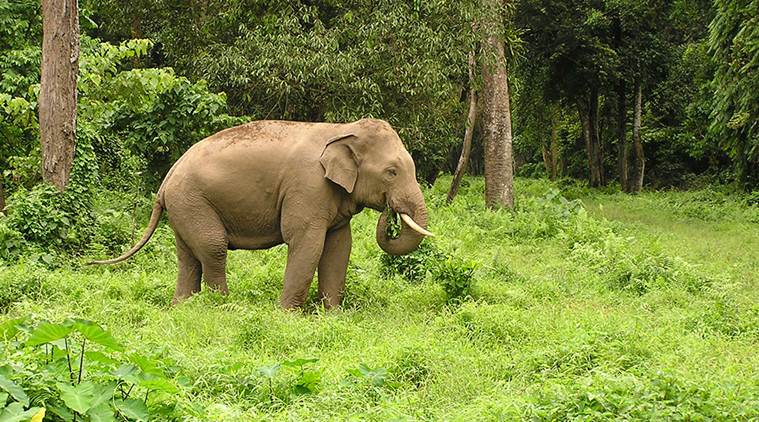At Buxa in West Bengal and Palamau in Jharkhand, the recent tiger census was met with shock and denial. The two tiger reserves are among three — along with Dampa in Mizoram — that have not recorded any tigers.
“This census only used camera traps and the cameras were set up for just eight days, so no tiger could be spotted. The 2014 census, which recorded two tigers, was done through indirect methods such as collecting scat (faeces) etc. We used the same method and found two tigers this year, but they (the NTCA) rejected it. We again have evidence of three tigers in Buxa and have informed the NTCA,” says Ravi Kant Sinha, Principal Chief Conservator of Forests (PCCF) in the state.

His counterpart in Jharkhand, P K Verma, too insists there are tigers in the Palamau reserve: “As of today, based on our analysis, three to four tigers are roaming in the tiger reserve, right from February this year.”
Story continues below this ad
While admitting that “no tigers were recorded between March last year and February this year”, Verma says this rang alarm bells, prompting the state government to take measures such as intelligence-based patrolling, among others. “Our forest-guard numbers had dwindled to 10% of the sanctioned strength; now, nearly two-thirds of vacancies have been filled up,” he says.
 Buxa officials blame rising population on the fringes of the reserve. (Express photo)
Buxa officials blame rising population on the fringes of the reserve. (Express photo)
The census mentioned Jharkhand has five tigers — an increase of two from 2014 — but a footnote pointed to how Palamau and the other two reserves had drawn a blank. “If not Palamau, where are these five tigers from? Ask the NTCA,” says Verma.
Palamau, Jharkhand’s only tiger reserve, was set up in 1974 and is spread across 1,026 sq km and three districts, Latehar, Garhwa and Lohardaga.
Experts say one of the main reasons for tigers leaving the Palamau reserve could be the Maoist activity in the jungles and the combing operations by security personnel. According to a forest official, there are 20 security camps “in many forest pockets” in and around the reserve which witness “firing and other operations”.
Story continues below this ad
Read | Pench Tiger Reserve: At country’s best reserve, lessons in conservation — abundant prey, community outreach
The official also said the NTCA’s “prey augmentation” measures for Palamau “remain only on paper”. “The NTCA rejected our initial proposal to release herbivores into the reserve. We raised the matter again, but we are yet to hear from them.”
Listing “excessive grazing” as one of reasons behind the dwindling tiger population, Jharkhand Wildlife Board member D S Srivastava says, “In the reserve and nearby areas, there are 1.5 lakh cattle and nothing has been done about it. Initially the cattle weren’t allowed in the core area of 414 sq km, but now this area is also grazed.”
Srivastava says the solution lies in better community participation and more enhanced security measures.
Story continues below this ad
At Buxa in Jalpaiguri district of West Bengal, PCCF Sinha admits “it is not a happy situation” and points to the growing population on the fringes of the reserve.
Also Read | Chhattisgarh: Its count down to less than half, state looks at Panna
The forests that are part of this reserve are interspersed with numerous villages and tea estates, with their residents dependent on the jungle.
Sinha says one of the ways to improve the tiger population is to relocate villagers. “We have 63 villages around the Buxa tiger reserve. They are not encroachers; some of them have been living here for generations. We want voluntary relocation, not forceful eviction. That’s why this is taking time,” he says.
Story continues below this ad
Sinha hopes to get the 29 families of Jainti village to move out later this year. The last time a village was relocated was in 2003.
Forest officials say there are plans to bring six tigers from outside to the Buxa forest and increase the prey base by bringing in 50 sambhar deers over the next year.
However, Biswajit Mohanty, former member of the National Board for Wildlife, is sceptical. “I am afraid we can’t simply pick tigers and relocate them to Buxa without ensuring their safety and prey base.”
 A Bengal Tiger in forest (Source: Getty Images)
A Bengal Tiger in forest (Source: Getty Images)
 Buxa officials blame rising population on the fringes of the reserve. (Express photo)
Buxa officials blame rising population on the fringes of the reserve. (Express photo)






